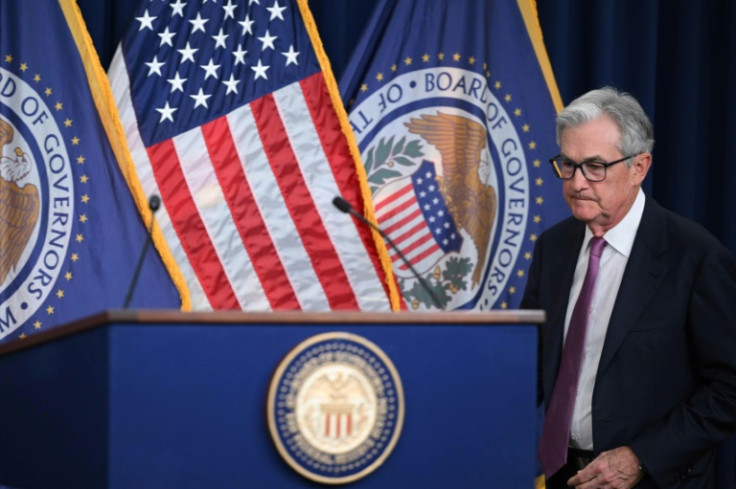Powell: Fed Is No Longer Forecasting US Recession

KEY POINTS
- The Federal Open Market Committee increased the target range of the federal funds rate by .25%
- The rate hike was exactly in line with market expectations
- Powell said rates will likely not be cut until 2024 or later
The Federal Reserve is no longer forecasting a recession for the U.S. economy, according to Fed Chair Jerome Powell.
On Wednesday, the Federal Open Market Committee announced the increase of the target range of the federal funds rate by .25% to a range of 5.25% to 5.5%, the highest such rate in 22 years.
The move was expected by many economists as the U.S. central bank continues its mission to wrangle inflation and achieve a so-called soft landing.
The move did little to the markets. The S&P 500 and Nasdaq both fell slightly during Wednesday's trading. The Dow Jones index increased slightly to extend its winning streak to 13 consecutive days, matching a mark not seen since 1987.
During a press conference following the announcement, Powell said recent reports, such as the latest U.S. Bureau of Labor Statistics Consumer Price Index report released earlier in July, show the pace of inflation is cooling. This, he told reporters, indicates the Fed is moving in the right direction in its mission to bring inflation within a target range of 2% on a year-over-year basis.
The June report, released July 12, pegged inflation at 3%. Inflation, according to CPI figures, in the U.S. has fallen steadily since reaching a peak at 9.1% in June 2022.
Powell was repeatedly asked if the FOMC would hike rates again during its next meeting but he didn't provide a clear answer, saying the committee will assess the situation and all of the available metrics when it meets again in September.
Powell did say any future rate decisions will be heavily influenced by the two CPI reports scheduled to be released in the interim, as well as the BLS Employment Situation Summary reports. While the June CPI report was positive, he said, it was just one data point and far more must be considered before declaring inflation under control.
As far as cutting rates, Powell said the Fed would need to see clear signs its policy is working effectively to control price increases. He said that likely will not happen until 2024 or later.
"You'd stop raising long before you got to 2% inflation and you'd start cutting before you got to 2% inflation too," Powell said. "We don't see ourselves getting to 2% ... until 2025 or so."
When asked about achieving the soft landing -- bringing inflation back to 2% without a recession -- Powell said "we do have a shot."
"Given the resilience of the economy recently, (Fed staff) is no longer forecasting a recession," Powell said.
Powell's comments echoed International Monetary Fund Chief Economist Pierre-Olivier Gourinchas' outlook. On Tuesday, he told AFP the IMF is "cautiously prudent that the US economy could avoid a recession" However, he cautioned the path is "very, very narrow."
Economic observers said they feel the Fed should not hike the rate any further until it gathers more data on how its current monetary policy is affecting the U.S. economy.
In an email to International Business Times, Kevin Erdmann, a senior affiliated scholar at the Mercatus Center at George Mason University, said the Fed needs to be willing to correct back to a low target rate reflective of a return to a more normal rate of inflation.
"Markets shift on their own schedule, and it can be difficult for a committee-managed institution to change directions quickly enough to stay ahead of those shifts," Erdmann said. "In both 2001 and 2007, the delay in switching from rate hikes to rate cuts probably worsened the subsequent declines in nominal income growth.
"With inflation near the 2% target, the neutral target rate is almost certainly well below 5%, so the Fed is in that challenging position again."
© Copyright IBTimes 2024. All rights reserved.






















